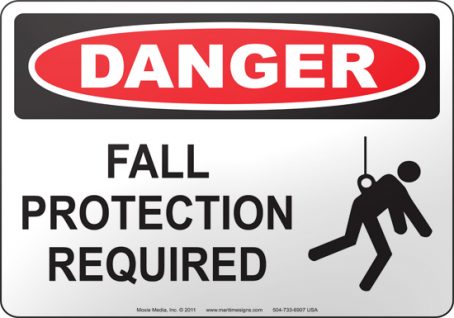Safety Talks – Fall Hazards

Working at elevations
Injuries from falls are one of the most common and severe workplace accidents. Employees must understand how to identify fall hazards and the ways they can protect themselves.
Areas Where Fall Hazards Exist:
Any height greater than 4 feet is considered a hazard and must be protected. This includes:
- Roofs
- Floor Openings
- Loading Docks
- Work Platforms
Ways to Protect Employees from Fall Hazards:
The most effective way to protect employees from falls is by eliminating the hazard. Passive systems such as guardrails and covers remove the employee’s exposure to the hazard.
Fall protection equipment must be used and cared for properly:
Guardrails-
- Always work within the confines of the guardrail.
- Must meet design requirements (spacing, height, etc.) of OSHA CFR 1910.23
Floor Hole / Opening Covers-
- Must support the intended load or at least 400 lbs. (20,000 lbs. If vehicle traffic)
- Must lay even with the floor; protruding covers create a tripping hazard
Boundary Lines System-
- Must be erected 6 feet from the edge of the roof or fall hazard
- Only used in certain roofing activities; not approved by OSHA
- Must be 34 inches high and visible in all weather conditions
Safe Work Distances-
- Minimum distance of 15 feet to the edge – travel within 15 feet will require fall protection
- Pathway must be clearly marked and employees need to be trained
- This is a best management practice
Personal Fall Arrest System-
- Inspect lanyard, harness, rings and other components before each use
- Inspect anchors annually and have them tested every 10 years
- Ensure the lanyard is the correct length for the height you will be working at
- Must train employees on how to use, inspect and maintain fall arrest equipment
- Replace equipment that is damaged or subjected to loads from a fall
Check out our Safety Talk on Ladder Safety.
